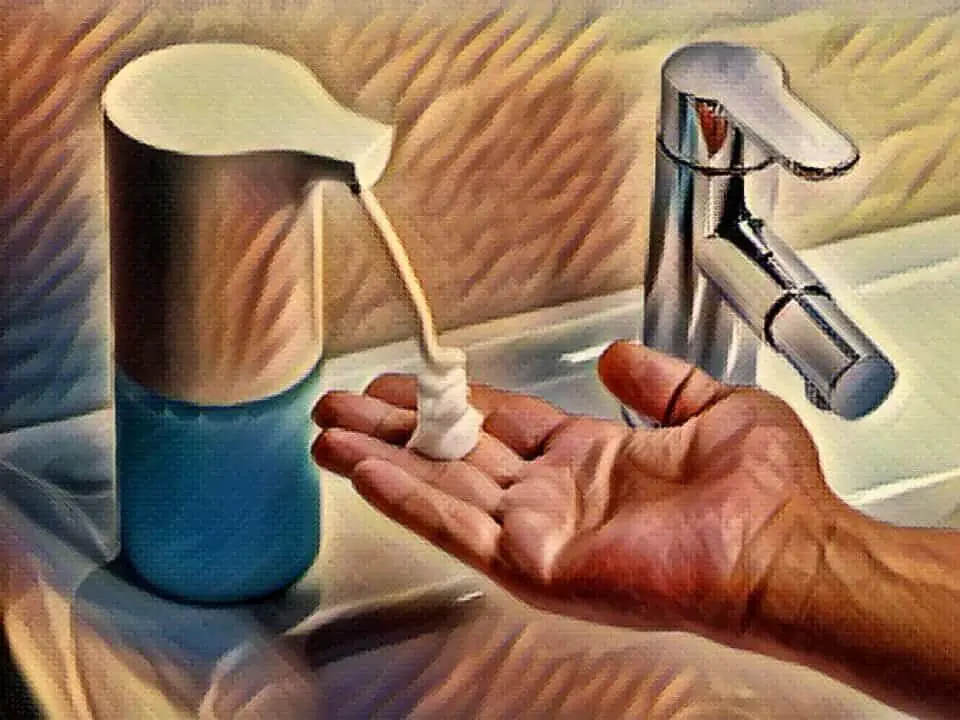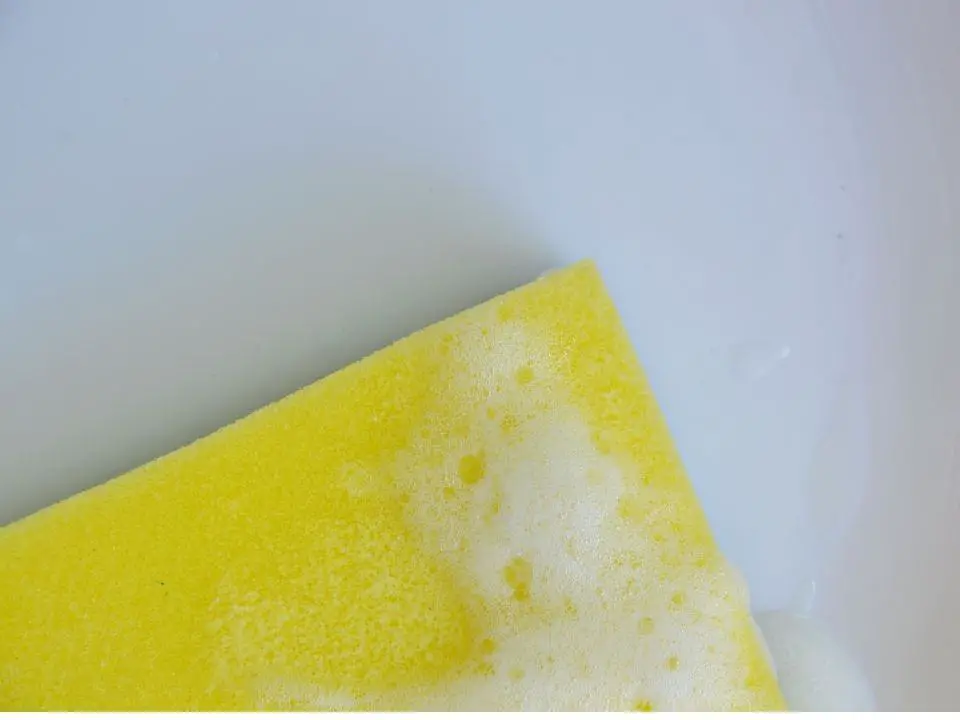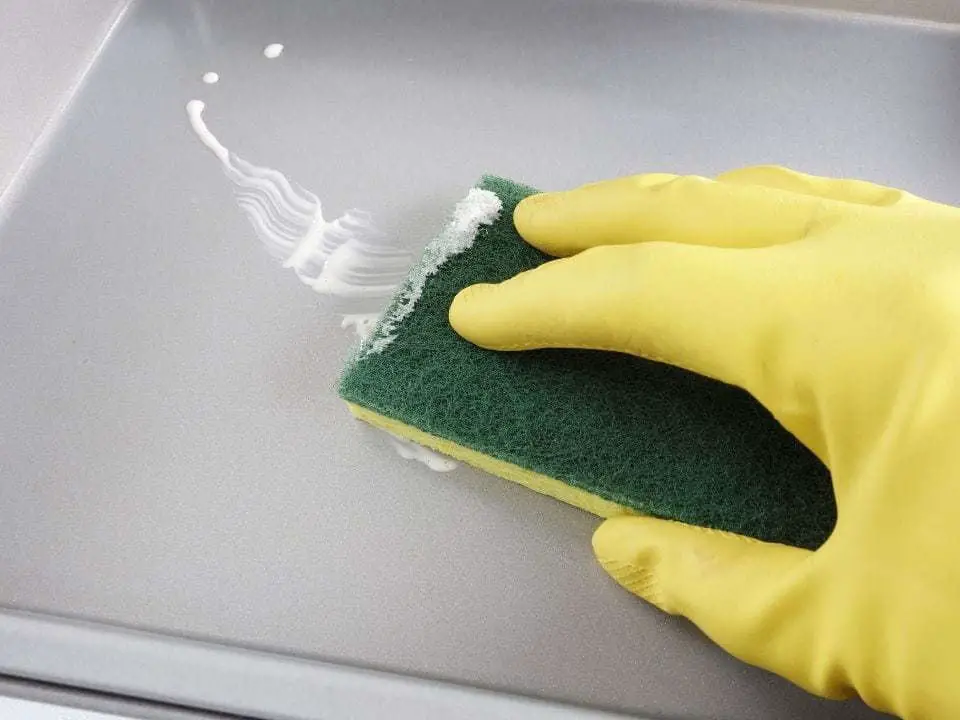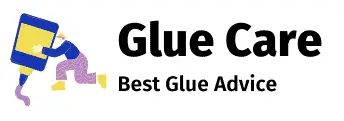One of the most difficult things to remove from tile is gorilla glue. It’s a strong adhesive and it can be tough to get off your tiles! In this post, we will discuss 7 steps to remove gorilla glue from tile. These tips are simple and effective, so you don’t have to worry about spending hours scrubbing at stubborn bits of glue on your flooring – just follow these steps and you’ll be done in no time!
- Steps to remove gorilla glue from tile
- 1. Fill a bucket with warm water and dish soap
- 2. Dip the sponge in the soapy water
- 3. Scrub at the glue until it starts to come off, then rinse with clear water
- 4. Dry any areas that have been cleaned thoroughly with a towel or paper towel
- 5. Repeat steps 2 – 4 until all of the glue is removed from tile surface
- 6. Use an adhesive remover to remove any remaining residue if necessary
- 7. Try some tips to help protect future staining
- Some final words
- Frequently Asked Questions
Steps to remove gorilla glue from tile
1. Fill a bucket with warm water and dish soap
The dilution of the soapy solution will help dissolve the glue faster

In addition, you should always wear rubber gloves when dealing with any sort of adhesive or cleaning chemical! Rubber can decompose over time if exposed to harsh solvents, so it’s best not to take chances.
Soaking in all-purpose cleaner overnight can also work well for removing tough stains from tiles. For tougher cases where the glue residue may have seeped into your grout lines between tile joints, try using an old toothbrush dipped in more all-purpose degreaser along with some elbow grease! Make sure that you are scrubbing firmly.
2. Dip the sponge in the soapy water

Soak a dry sponge in your soapy water bucket, and then begin to scrub at the glue residue. You may need to re-soak the sponge as you work if it dries out from all of the cleanings!
Be careful when using harsh chemicals like bleach or acid cleaners which could damage grout lines between tiles. Always wear rubber gloves when working with any sort of chemical cleaner or adhesive remover product. Also avoid using caustic chemical cleaners which could damage grout lines between tiles.
3. Scrub at the glue until it starts to come off, then rinse with clear water
Be sure that you are scrubbing firmly – gorilla glue is not very easy to get off, after all! If necessary, use an old toothbrush dipped in degreaser for tougher stains. Scrub until no more adhesive remains on tile surface where the stain was located
You don’t want to use too much pressure or you’ll risk scratching your tile! Be sure that the water is running clear, as it will turn cloudy from all of the glue residues.

If there are still bits of adhesive on your tiles after scrubbing step two, repeat this step until no more remains – otherwise, they may attract dirt and grime over time which will make them look unsightly!
It’s important not to let water drip onto areas where it doesn’t belong while scrubbing at stubborn spots of gorilla glue on the tile surface. This can cause damage if a problem occurs later down the road with flooring sealant between joints in ceramic material.
4. Dry any areas that have been cleaned thoroughly with a towel or paper towel
Be sure to dry the surface thoroughly after cleaning it with water.
Gorilla glue will actually act as a sealant when dried, so if any moisture remains on tile or other surfaces where you’ve removed it there’s a chance that your tiles may start to swell and separate over time – this can cause serious damage to floors!
For best results, use paper towels or an absorbent cloth since they won’t leave behind fibers like cotton products do which could lead to sticking later down the line.
5. Repeat steps 2 – 4 until all of the glue is removed from tile surface
There are some glue stains too hard to remove in the first rub.
For best results, try repeating these steps until all of the adhesives has been removed.
Repeat this step as necessary to ensure that no sticky residue remains on your tiles! It’s important not to skimp on time spent scrubbing at gorilla glue stains – they are notoriously hard to remove completely without professional cleaning products, so you want to make sure you’ve done everything possible before calling it quits.
You may need a fresh set of rubber gloves if there is too much chemical or adhesive left behind in areas where water ran over them during previous attempts at removal. If you’re using rubbing alcohol instead of dish soap for soaking an old toothbrush can also help loosen tough spots stuck deep between grout lines.
6. Use an adhesive remover to remove any remaining residue if necessary
If other methods fail to remove all glue, you may think of using adhesive remover like Goo Gone

Be sure to use a product that is safe for your tile surface.
You may need to go over the area several times before you are able to remove all of the glue residues, so be patient and keep at it! You don’t want to risk doing any damage by rushing through this process.
As mentioned earlier in this post, adhesive removers can also work well when used with an old toothbrush or sponge – just make sure not to let water drip onto other parts where it doesn’t belong after scrubbing since this could lead to problems later down the line if moisture remains on tiles without being dried properly first!
7. Try some tips to help protect future staining
Apply sealant to prevent future staining/damage by applying a fresh coat every few months (ideally during winter when humidity levels are lower). This will also help protect against damage caused by salt which can build up in the winter and lead to discoloration of tiles.
If your house is exposed to a lot of moisture, it’s important that your tile flooring has been sealed properly otherwise you run the risk of developing mold or mildew growth – this can cause serious damage if left untreated!
Some final words
Here are the steps to remove gorilla glue from tile. We hope that you find them helpful! If not, then please ask us any questions or concerns about these methods in the comments below. We would love to hear what worked for your project and if there is anything else we can do to help make it easier for you with our tips! Happy crafting everyone!
Frequently Asked Questions
How do you get Gorilla Glue off of tile?
Gorilla Glue can be very difficult to remove and it’s important to use the right kind of remover, or you might end up damaging your tile. You can find a list of these on the Gorilla Glue website. Most commercial cleaners that say they are safe for vinyl work well on most surfaces such as wood and plastic, but not always on ceramic tile grout. Due to this limitation of cleaners, we recommend using warm water with white vinegar or baking soda mixed in with dish soap (Brita makes a good all-purpose cleaning concentrate). For tough glue residue, scrape it off along with adhesive goo if needed before washing away any remaining solution.
How do you get dried glue off ceramic tile?
Use a scraper to remove as much dried glue as possible, then use liquid dish soap in warm water over the remaining dried glue. Scrape off the dirty liquid layer with the scraper, then rub lightly with an all-purpose cleaner. Wipe with a dry towel.
Clean-Up Tip!
It’s important when cleaning any type of tile that you start at one corner and work your way back towards the other side in order to make sure no dirt is missed during cleanup!
How do you remove glue from floor after removing tile?
The residue of tile adhesive or floor wax can be removed with isopropyl alcohol (rubbing alcohol). Pour on enough to saturate the surface of the wax, then wait 10 minutes before scrubbing. Rinse off with clean water.
Avoid cleaning products containing ammonia as they may soften carpeting and cause it to wrinkle after drying. Instead consider using oxygenated bleach pesticide-free cleaners, which are not strong enough to destroy mold or mildew that might reside below heavily soiled areas of carpets.
How do you remove strong glue from tiles?
To remove strong glue from tiles, try scraping it away with a plastic scraper or scratch the surface of the tile.
If that doesn’t work then scrub or use some elbow grease to get rid of it. Be sure to wear gloves and eye protection though because there is a risk that the chemical may be dangerous for you. It just depends on what chemicals are mixed into your glue, so be careful! Lastly, there’s always paint remover if all else fails – but this method just takes a long time and can also damage your nails so be mindful. Painting over the glue works as well if you find removing it too much hassle.
